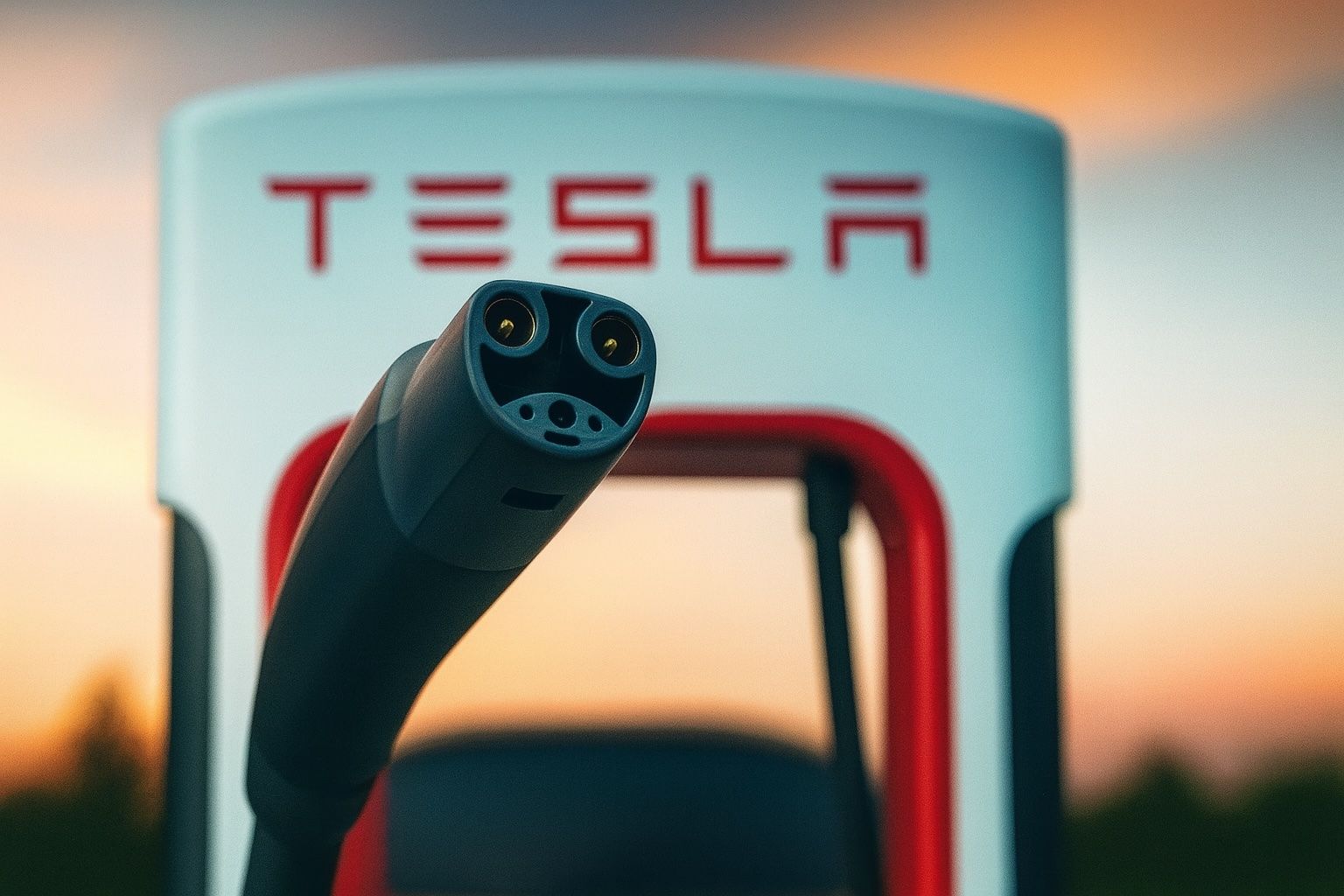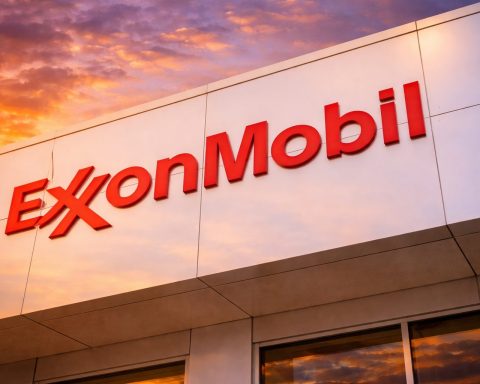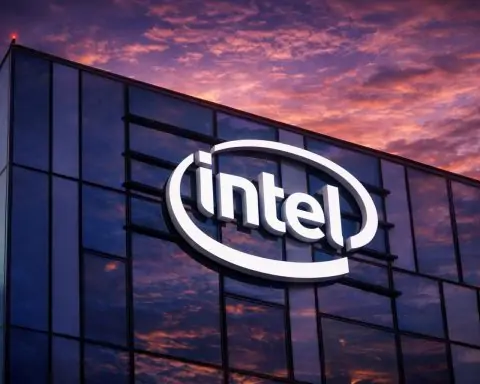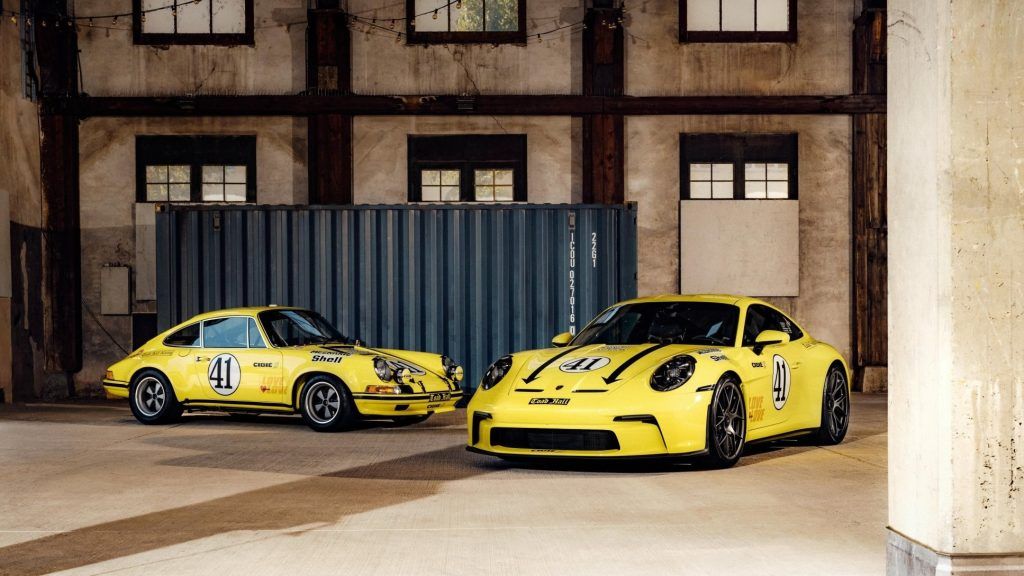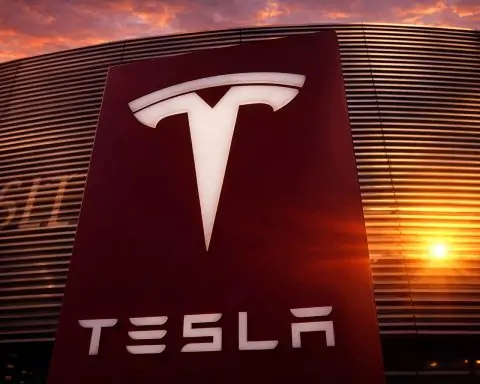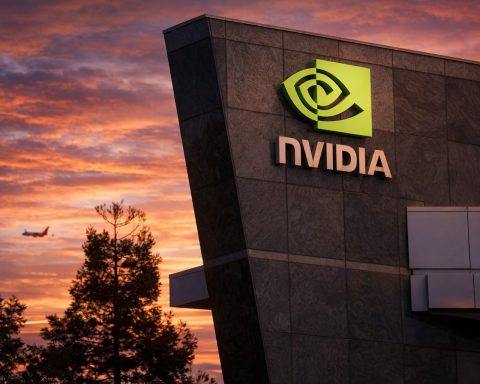- Auto insider’s dire prediction: Former Stellantis CEO Carlos Tavares cautions that Tesla may not exist a decade from now, suggesting CEO Elon Musk could abandon the car business to focus on robots, SpaceX or AI [1]. He argues Chinese rival BYD’s efficient, low-cost EVs could outpace Tesla, leading to a “colossal” collapse in Tesla’s valuation [2] [3].
- Tesla stock turbulence: Tesla’s share price slid ~4% late this week after a fourth consecutive quarterly profit miss, even as sales hit record highs [4]. The stock is up only about 9% in 2025, underperforming other tech giants [5]. Analysts cite margin pressure from rising costs (including $400 million in new tariffs) and aggressive price cuts as headwinds [6] [7].
- Chinese EV competition intensifies: China’s BYD overtook Tesla in global EV sales earlier this year [8]. Tesla’s market share in China has plummeted to ~5% (from 16% in 2020) amid fierce competition from BYD, Nio, XPeng and others [9] [10]. Even Musk has acknowledged “Chinese car companies are the most competitive… in the world,” as local brands outpace Tesla with cheaper models and advanced tech [11].
- Strategic challenges mount: Tesla faces a price war eroding profit margins, regulatory hurdles like import tariffs and shrinking EV tax credits, and ongoing supply chain strains [12] [13]. Musk’s attention is split between ventures, raising concerns about leadership focus [14]. Tesla’s board has floated a $1 trillion, 10-year pay package to incentivize Musk to stay and hit ambitious targets, but proxy advisors have pushed back, questioning the plan’s oversight [15].
- Industry reacts: Musk dismissed Tavares’s claim outright – responding on X (Twitter) that the ex-CEO “has absolutely no clue” [16]. Market experts note Tesla’s valuation still banks on future innovations in robotics and AI, even as near-term profits are squeezed [17] [18]. The next few years – including a Nov. 6 shareholder vote on Musk’s mega-pay deal – will test Tesla’s ability to fend off rivals and prove its long-term vision.
Tavares’ Shocking Tesla Prediction
Carlos Tavares, who led auto giant Stellantis until late 2024, has delivered a grim warning about Tesla’s future. In an interview with French newspaper Les Echos (cited by Fortune), Tavares predicted that Tesla could “abandon the auto business” and possibly cease to exist within the next 10 years [19] [20]. He suggested Tesla’s famed CEO, Elon Musk, might eventually walk away from car manufacturing to refocus on his other ventures – from humanoid robots to SpaceX and artificial intelligence [21]. “We can’t rule out that at some point, he’ll decide to leave the automotive industry to refocus on humanoid robots, SpaceX, or artificial intelligence,” Tavares said, adding that “Elon Musk will have left the automotive industry” [22].
Tavares, speaking as he promoted his new memoir [23], didn’t stop there. He directly questioned Tesla’s ability to withstand intensifying competition, especially from China. According to Tavares, China’s EV champion BYD is “eating Tesla’s lunch” by building more efficient, cost-effective electric cars [24]. He noted that BYD leapfrogged Tesla in global EV sales earlier in 2025 [25] – a symbolic changing of the guard in the industry. Given Tesla’s lofty stock market valuation, Tavares warned, “Tesla’s stock market value loss will be colossal because this valuation is simply stratospheric… I’m not sure that Tesla will still exist in 10 years. It’s an innovative group, but they’ll be beaten by BYD’s efficiency.” [26]. In other words, Tesla’s edge in innovation could erode as rivals catch up, potentially rendering the company obsolete by the mid-2030s.
Tesla Stock Under Pressure After Earnings Misses
Tesla’s latest financial results appear to underscore some of Tavares’ concerns about the company’s near-term challenges. This week, Tesla posted its fourth consecutive quarterly profit miss, even as it managed record-high vehicle sales [27]. The company’s third-quarter revenue did grow 12% year-over-year to $28.1 billion, boosted by a rush of deliveries (especially in China) [28]. However, higher costs took a toll on profitability. Notably, Tesla’s Chief Financial Officer revealed the company was hit with over $400 million in tariffs on auto parts – a direct impact of former President Trump’s trade policies [29] [30]. Coupled with a drop in lucrative regulatory credit sales, these costs squeezed Tesla’s profit margins [31]. “The margin compression is the real concern. Higher operating expenses, increased tariffs and lower regulatory credit revenue all hit at once,” observes Farhan Badami, an analyst at eToro [32].
Investors reacted nervously. Tesla’s stock price tumbled about 4.4% the day after earnings, extending a slide as markets digested the margin pressures [33]. Year-to-date, Tesla shares have only risen ~9%, making Tesla one of the weakest performers among the U.S. tech mega-caps known as the “Magnificent 7” [34]. For context, Tesla’s stock had plunged as much as 39% by spring 2025 amid weak demand and public backlash over Musk’s political entanglements, before recovering some ground [35]. The partial rebound was fueled by optimism around Tesla’s future tech ventures and a bold new compensation plan for Musk [36]. Still, Tesla’s valuation remains sky-high – recently over 200× its current earnings – implying investors are banking on significant growth ahead [37]. That future growth is expected to come from ventures like robotics and AI, not just car sales [38]. This helps explain why Musk continues to pitch Tesla as more than an automaker. But it also highlights the risk: if those moonshot projects don’t pay off soon, the stock’s rich valuation could be hard to justify.
Looking forward, analysts are split on Tesla’s trajectory. The company did beat revenue forecasts thanks to record EV deliveries in Q3 [39]. However, demand may soften in coming quarters as key U.S. EV tax credits phase out, removing a buyer incentive [40]. To keep sales growing, Tesla has resorted to aggressive pricing moves – recently rolling out cheaper “Standard Range” versions of its Model 3 and Model Y that undercut higher trims by up to $5,500 [41]. Such price cuts aim to match competitors’ offerings, but they also crimp Tesla’s industry-leading margins. In short, Tesla’s stock market story in the near term will hinge on how well the company can balance volume growth against profitability. Musk himself admitted that Tesla might face “a few rough quarters” as EV incentives wane, though he remains confident in long-term demand (bolstered by future products like the Cybertruck and robotaxis). For now, Wall Street is watching how Tesla navigates these choppy waters – and whether the company can hit its ambitious targets without further denting its bottom line.
Chinese EV Makers Challenge Tesla’s Dominance
A Chinese electric vehicle on display. Automakers like BYD have surged in sales by offering affordable EVs in Tesla’s core markets [42].
The most immediate threat to Tesla’s reign comes from China’s electric vehicle powerhouses. Tavares singled out BYD – and for good reason. Often called the “Tesla of China,” BYD has leveraged its home turf advantages in cost and scale to outsell Tesla globally in EVs earlier this year [43]. In China (the world’s largest EV market), Tesla’s once-impressive lead has evaporated. Tesla’s market share in China has plummeted to roughly 5%, down from 16% in 2020 [44]. The slack has been picked up by fast-moving Chinese brands like BYD, Nio, and XPeng, which offer a flood of locally tailored EV models, often at lower price points than Tesla’s imports [45]. From budget mini-EVs to luxury electric sedans, Chinese manufacturers are blanketing every segment. “Chinese car companies are the most competitive car companies in the world,” Elon Musk himself remarked last year, acknowledging the intense rivalry Tesla faces on Chinese soil [46].
Tesla’s response to this onslaught has been to cut prices and ramp up its Shanghai Gigafactory output, effectively engaging in a price war with Chinese peers. This strategy helped boost Tesla’s China deliveries by 33% year-on-year [47], but it’s a double-edged sword: while lower prices make Teslas more accessible, they also squeeze profit margins and risk diluting the brand’s premium image. Meanwhile, Chinese EV makers aren’t content to dominate at home – they’re expanding aggressively overseas. BYD, for instance, has entered markets from Europe to Australia with competitively priced models and is rapidly scaling its global presence. Other players like MG (SAIC) and Geely are also shipping Chinese-made EVs to Western markets, often undercutting incumbents. This broader competitive landscape means Tesla must fight on multiple fronts: defending its share in China, while also fending off newcomers internationally (including Chinese brands making inroads into Europe, where regulators are even considering tariffs on Chinese EV imports to protect local automakers).
The technological gap between Tesla and its pursuers is also narrowing. Features such as advanced driver assistance, long-range batteries, and fast charging – once Tesla’s selling points – are now being matched or even exceeded by rivals. For example, Shenzhen-based BYD has championed its in-house battery tech (the Blade Battery) and is known for relentless efficiency improvements. Legacy automakers, too, are catching up; companies like Volkswagen, GM, and Ford have poured billions into EV development and are rolling out dozens of new electric models. In Europe, Tesla’s Model Y is selling well, but faces fresh competition from local electric SUVs and a wave of Chinese imports. In India, where Tesla is only just planning market entry, domestic and Chinese-made EVs could stake an early lead. All of this paints a picture of an EV market that will be far more crowded in the next decade. Tavares’ warning reflects this reality: Tesla can no longer count on being the only game in town, and its dominance is not guaranteed as EVs go mainstream and competitors multiply.
Innovation, Pricing, and Other Headwinds
Beyond competition, Tesla must grapple with several strategic challenges that could define its fate in the coming years. One major pressure point is the price of innovation. Tesla built its brand on cutting-edge technology – from industry-leading battery ranges to self-driving software and humanoid robots in development. Musk frequently touts projects like Full Self-Driving (FSD) AI, the Optimus robot, and next-gen batteries as game-changers for Tesla’s future. However, these ventures require enormous investment and have yet to deliver significant revenue. In the meantime, Tesla’s core auto business is facing an increasingly aggressive price war. In China, as noted, Tesla slashed prices by around $1,900 per vehicle earlier in 2024 to stimulate demand [48]. It has enacted multiple rounds of price cuts in the U.S. and Europe as well, aiming to stay ahead of interest rate impacts and competitors’ discounts. Such moves, while boosting sales volumes, directly hit Tesla’s margins – a key reason its recent profits have disappointed. Balancing innovation and profitability will be a tightrope walk: Tesla needs to invest in future tech to justify its valuation, yet it can’t afford to bleed cash or undermine its profit advantage for too long.
Regulatory and supply chain hurdles add another layer of complexity. Trade policies have tangibly affected Tesla – for example, the reinstatement of tariffs on Chinese-made parts cost Tesla hundreds of millions in the latest quarter [49] [50]. Geopolitical tensions could further disrupt Tesla’s globally distributed manufacturing (its giant Shanghai plant, for instance, ships cars worldwide, and any U.S.-China strife could pose risks). Meanwhile, the phase-out of government EV incentives in markets like the U.S. and China threatens to slow industry growth just as competition heats up [51]. Tesla benefited greatly from early EV tax credits; losing those perks means it must compete on product merit and price alone. On the supply front, the company has navigated chip shortages and material scarcities relatively well so far, often by securing long-term contracts (such as for lithium). But as EV demand surges industry-wide, scrambling for batteries and raw materials will intensify for all players. Any slip in Tesla’s supply chain – whether due to material shortages or factory downtime – could hand an advantage to rivals eager to capture unmet demand.
Perhaps the most unique challenge facing Tesla is the question of Musk’s leadership bandwidth. Elon Musk’s high profile and multi-faceted ambitions are a double-edged sword for Tesla. On one hand, his visionary persona and risk-taking have been integral to Tesla’s success and its cult-like following among consumers and investors. On the other hand, Musk now splits his attention among several companies – SpaceX’s rocket empire, the X (Twitter) social media platform, a neurotech venture (Neuralink), an AI startup, and more. Even Tesla’s board recognizes the risk: keeping Musk focused on Tesla’s mission is so critical that the company has proposed a massive pay incentive to retain him [52]. In fact, Tesla’s directors put forth a 10-year compensation plan worth about $1 trillion tied to ultra-ambitious targets (including a 5× increase in Tesla’s market cap to $8.5 trillion) [53]. The idea is to lock in Musk’s commitment through 2035, ensuring he doesn’t drift away to other endeavors. However, this plan has met resistance from corporate governance experts – two major proxy advisory firms urged shareholders to vote against Musk’s new pay package, questioning whether the goals are realistic and whether the board would have too much discretion in judging his performance [54]. Tesla’s board, for its part, defended the proposal, arguing that without bold bets and Musk’s leadership, Tesla could “turn into just another car company mired in the ways of the past” – a pointed rebuttal to those who prefer caution [55].
All these factors – innovation vs. profit, external policy impacts, supply chain resilience, and keeping Musk at the helm – will determine if Tesla can maintain its edge. The coming years will likely see Tesla launching new models (the long-awaited Cybertruck and a revamped Roadster), scaling up battery production (with its 4680 cells and gigafactories), and perhaps venturing into new segments like robo-taxis or energy storage on an even larger scale. Each initiative carries execution risks and heavy costs. As Tavares implied, if Tesla stumbles or if Musk’s focus wavers, competitors are ready to pounce. The next decade is essentially a high-stakes race: can Tesla reinvent itself and broaden its lead faster than others can catch up?
Musk and Industry Experts Respond
Elon Musk has not taken kindly to Tavares’ doomsaying. The Tesla CEO publicly fired back on X (formerly Twitter), bluntly stating that Tavares “has absolutely no clue.” [56] Musk dismissed the notion that he would ever walk away from Tesla’s core mission, especially given the millions of Tesla owners and the company’s ongoing projects in autonomy and AI. In fact, Musk appears to be doubling down on his commitment to Tesla. At the company’s October earnings call, he reiterated that Tesla’s future – from self-driving cars to the Optimus humanoid robot – will revolutionize transportation and justify the company’s sky-high valuation. And with the aforementioned shareholder vote on his $1 trillion pay package set for November 6, all signs suggest Musk intends to be deeply involved at Tesla for the long haul [57]. (It’s widely expected the plan will pass; previous stock awards for Musk have earned investor approval despite proxy advisors’ objections.)
Reactions from other industry experts are mixed. Some analysts view Tavares’ 10-year death sentence for Tesla as overly pessimistic, noting that Tesla still has formidable strengths – a strong brand, loyal customer base, proprietary charging network, and years of EV production experience that newcomers lack. “Tesla isn’t standing still; its investments in AI and robotics could redefine its business,” one tech analyst pointed out, referencing how Tesla’s valuation is propped up by hopes of future tech breakthroughs [58]. In the bull case, Tesla leverages its software prowess and scale to maintain leadership even as other companies flood the market. On the other side, more skeptical voices echo elements of Tavares’ critique. They argue Tesla’s advantage is narrowing and that the company, now over 20 years old, must prove it can evolve beyond a one-man brand. Dan Ives of Wedbush, a prominent Tesla watcher, recently said that while Tesla is still the “EV trailblazer,” the coming onslaught of competition from Detroit to Shenzhen means “the golden age of Tesla’s dominance is over.” If Tesla doesn’t execute flawlessly – whether on launching new models, cutting costs, or keeping Musk’s attention on cars – it could risk a slide into mediocrity over the next decade.
Meanwhile, traditional automakers and rivals have quietly cheered Tavares’ bold statement. It’s rare for an industry executive to openly predict a competitor’s demise, and Tavares’ remarks underscore how seriously legacy carmakers take the Tesla threat (and how eager they might be to see Tesla stumble). Companies like GM, Ford, Volkswagen, and Stellantis itself are all racing to expand their EV line-ups to chip away at Tesla’s share. In Europe, leaders have openly discussed the need to counter both Tesla and Chinese imports to protect the continent’s auto industry. Regulators are also paying attention: everything from safety rules for self-driving cars to environmental standards could shape the competitive balance. Notably, some Chinese EV executives have a slightly different take than Tavares – they worry about a coming shakeout among Chinese EV startups, given how crowded that field is [59]. In other words, the next 10 years could see consolidation and failures, but not necessarily with Tesla as the victim. As XPeng’s CEO He Xiaopeng mused, the global auto industry might end up with only a handful of major players after an “elimination round” from 2025–2027 [60]. Tesla, if it plays its cards right, could very well be among those survivors – especially if Musk stays focused and the company retains its innovative mojo.
For now, Tesla finds itself at an inflection point. Tavares’ provocative forecast that Tesla might not survive the decade is a stark reminder that past success doesn’t guarantee future dominance. The electric car pioneer is navigating a whirlwind of challenges: economic (margin pressures, pricing fights), competitive (rivals old and new), and strategic (keeping its visionary leader on mission). On the other hand, Tesla has defied naysayers countless times before – from early critics of its high-end EVs to those who thought incumbents would quickly eclipse it. The next few years will reveal whether Tesla can silence its critics yet again or if Tavares’ warning of an eventual Tesla exit from the car scene will inch closer to reality. As Musk pushes to make Tesla “larger than any company in history” [61], the world will be watching if that audacious bet pays off – or if the EV revolution’s first mover gets unseated in the very market it created.
Sources:
- Times of India – “Auto giant Stellantis ex-CEO Carlos Tavares says: Tesla may not exist in 10 years; Chinese company … may ‘kill’ it” [62] [63]
- LiveMint – “Will Elon Musk’s Tesla cease to exist in next 10 years? Ex-Stellantis CEO’s grim prediction…” [64] [65]
- TS2 (Tech Stories) – “Stock Market Today 24.10.2025” (Tesla segment) [66] [67]
- Reuters – “Tesla shares slide as margin pressures mount despite record sales” [68] [69]
- Teslarati – “Tesla rival claims company won’t even make cars in ten years” (Musk’s response) [70] [71]
- Business Insider – “Tesla’s biggest Chinese rival is feeling the heat in China’s car wars” [72] [73]
References
1. www.livemint.com, 2. ts2.tech, 3. ts2.tech, 4. www.reuters.com, 5. www.reuters.com, 6. www.reuters.com, 7. www.reuters.com, 8. timesofindia.indiatimes.com, 9. timesofindia.indiatimes.com, 10. timesofindia.indiatimes.com, 11. www.livemint.com, 12. ts2.tech, 13. www.reuters.com, 14. ts2.tech, 15. www.livemint.com, 16. www.teslarati.com, 17. www.reuters.com, 18. www.reuters.com, 19. www.livemint.com, 20. www.livemint.com, 21. www.livemint.com, 22. www.livemint.com, 23. www.teslarati.com, 24. ts2.tech, 25. timesofindia.indiatimes.com, 26. www.livemint.com, 27. www.reuters.com, 28. timesofindia.indiatimes.com, 29. www.reuters.com, 30. www.reuters.com, 31. www.reuters.com, 32. www.reuters.com, 33. www.reuters.com, 34. www.reuters.com, 35. www.reuters.com, 36. www.reuters.com, 37. www.reuters.com, 38. www.reuters.com, 39. www.reuters.com, 40. www.reuters.com, 41. www.reuters.com, 42. www.businessinsider.com, 43. timesofindia.indiatimes.com, 44. timesofindia.indiatimes.com, 45. timesofindia.indiatimes.com, 46. www.livemint.com, 47. timesofindia.indiatimes.com, 48. www.businessinsider.com, 49. www.reuters.com, 50. www.reuters.com, 51. www.reuters.com, 52. www.livemint.com, 53. www.livemint.com, 54. www.livemint.com, 55. timesofindia.indiatimes.com, 56. www.teslarati.com, 57. www.livemint.com, 58. www.reuters.com, 59. www.businessinsider.com, 60. www.businessinsider.com, 61. www.livemint.com, 62. timesofindia.indiatimes.com, 63. timesofindia.indiatimes.com, 64. www.livemint.com, 65. www.livemint.com, 66. ts2.tech, 67. ts2.tech, 68. www.reuters.com, 69. www.reuters.com, 70. www.teslarati.com, 71. www.teslarati.com, 72. www.businessinsider.com, 73. www.businessinsider.com
